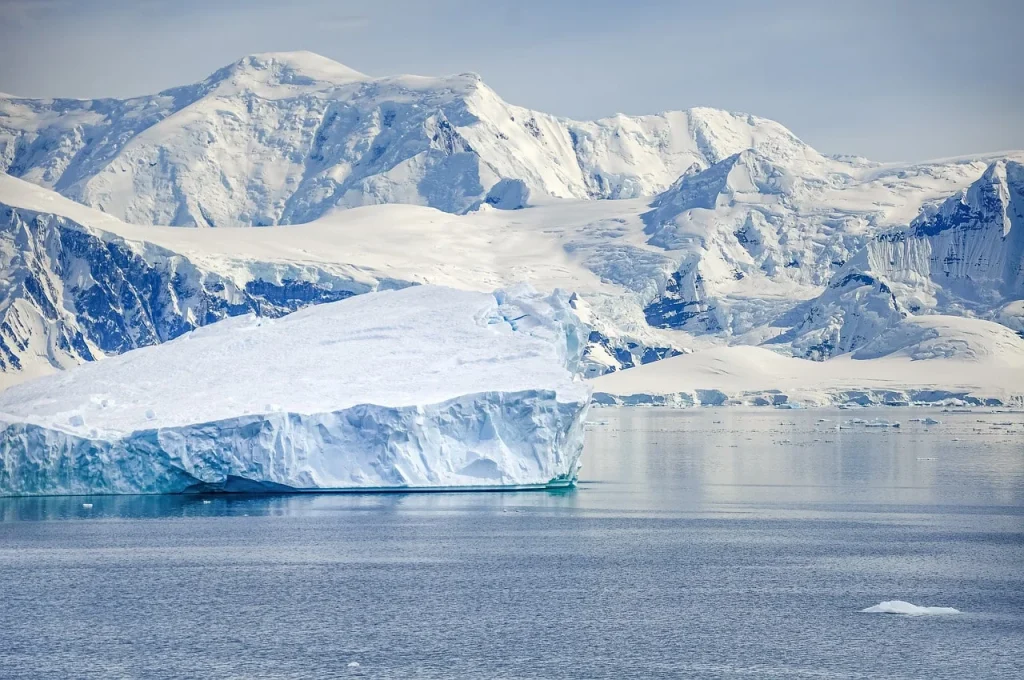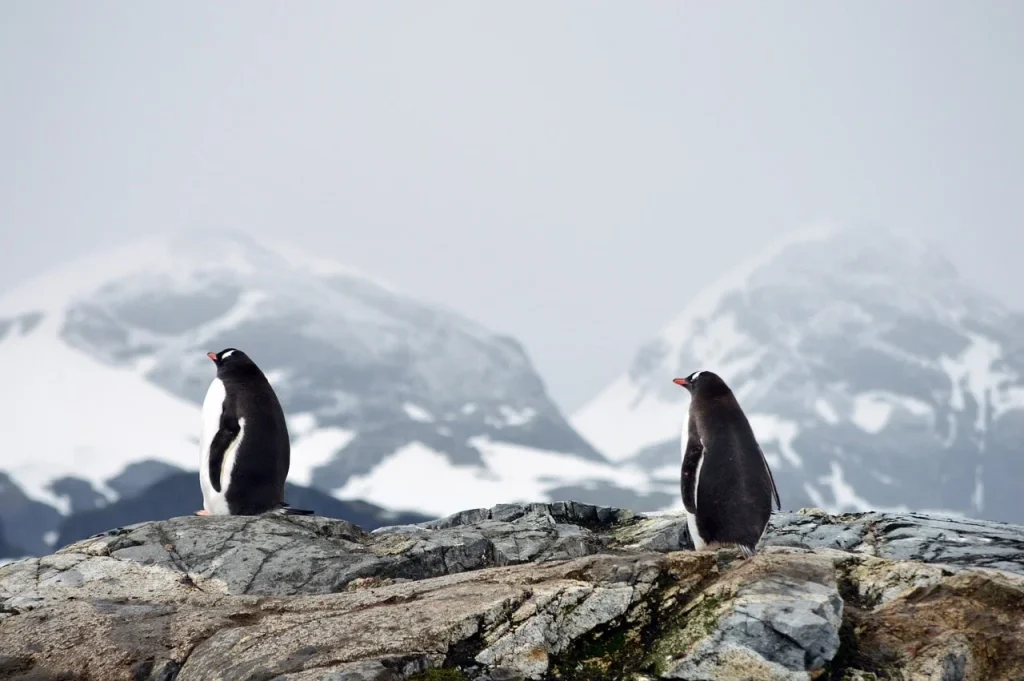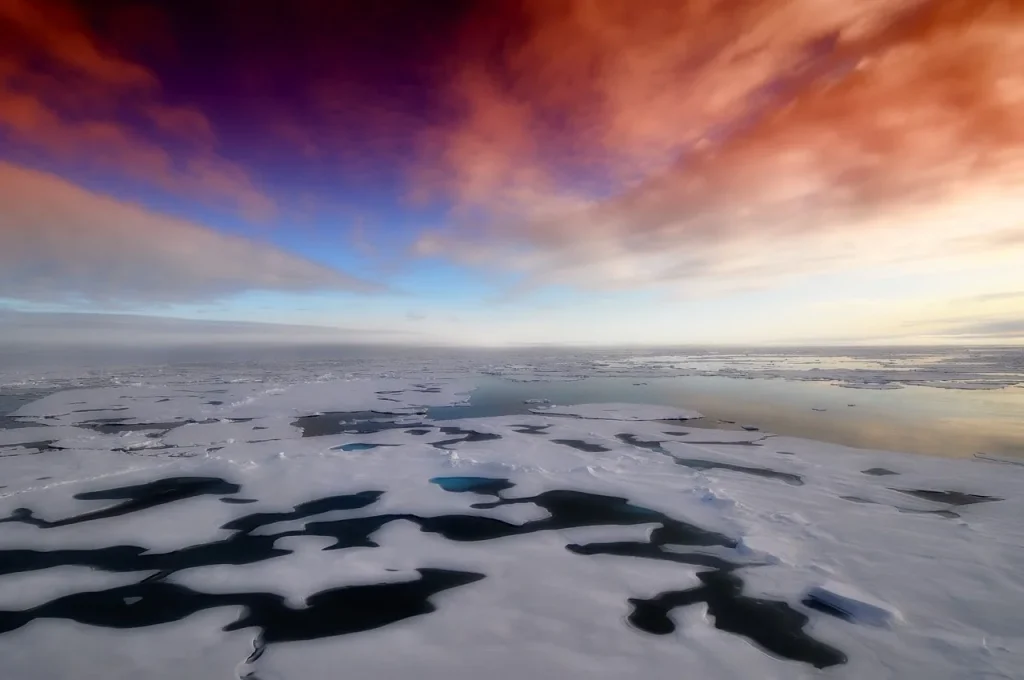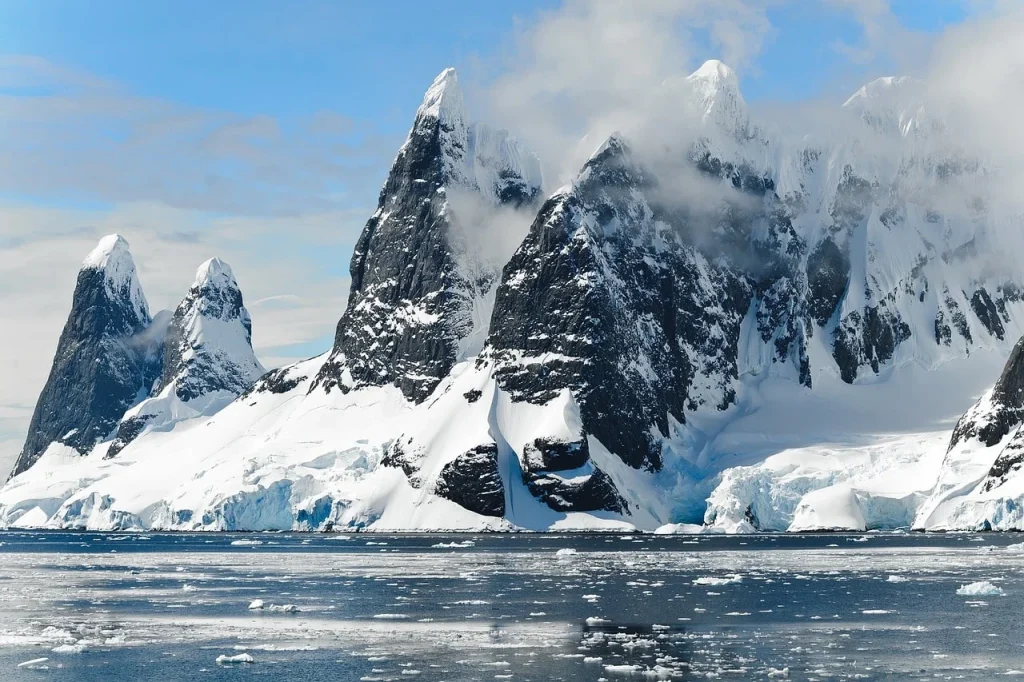Did you know that Antarctica is the most isolated continent on Earth? This icy land holds many surprises, from underground lakes to ancient fossils, and even active volcanoes.
In this post, we’ll explore some interesting facts about Antarctica, giving you a glimpse of its majestic icebergs, the research stations dotting its surface, and the international treaties that protect it.
Antarctica is a very alien environment, and you can’t survive here more than minutes if you’re not equipped properly and doing the right thing all the time.
Mike Stroud
Antarctica Facts
Let’s start our journey into the icy wonders of Antarctica with these fascinating facts. Read carefully, as there’s a quiz at the end to test your newfound expertise!
- Underneath the thick ice sheet, more than 400 lakes remain unfrozen due to the intense pressure and geothermal heat.
- Mount Erebus, one of the southernmost active volcanoes on Earth, is famed for its persistent lava lake.
- The Dry Valleys are virtually ice-free, receiving less than 100 mm of precipitation per year and are the closest of any terrestrial environment to Mars.
- The continent holds about 70% of the planet’s fresh water, locked within its vast ice sheet.
- A unique meteorite from Mars, known as ALH84001, was discovered here, suggesting the possibility of ancient Martian life.
- The ice streams move at different speeds, with some like the Byrd Glacier flowing at a pace of up to 800 meters annually.
- The ozone hole above the region was first identified by British scientists in 1985, leading to global agreements on reducing CFC emissions.
- South Pole Telescope and Neutrino Detector are significant for cosmic observations, unhindered by light pollution.
- During winter, sea ice almost doubles the size of the continent, expanding the area of frozen surface significantly.
- The lowest temperature ever recorded on Earth was -128.6°F at the Soviet Union’s Vostok Station in 1983.
- There exists a waterfall, Blood Falls, which flows with red-colored water due to iron oxidation.
- The Transantarctic Mountains, stretching over 3,500 kilometers, divide the continent into East and West.
- A species of midge, Belgica antarctica, is the largest purely terrestrial animal native to the continent, at just 6 mm long.

- Most of its landmass is covered by ice sheets that are, on average, 1.9 kilometers thick.
- No trees or shrubs grow here; only about 2% of the land is devoid of ice, mostly along the coasts.
- The Aurora Australis, or Southern Lights, are frequently visible in the polar night skies, offering a spectacular display of natural light.
- Extreme adaptations are observed in local wildlife, such as the emperor penguins, which breed during the harsh winter months.
- Historic huts from the age of early exploration have been preserved, including those used by Scott and Shackleton.
- Icefish have unique antifreeze proteins in their blood, allowing them to survive in freezing waters.
- A single gram of soil from the region can contain thousands of nematodes, which are among the simplest multicellular organisms on Earth.
- Plate tectonics research has revealed that the continent was once part of a supercontinent called Gondwana, which included Africa and India.
- The first confirmed sighting of the continent was in 1820 by a Russian expedition led by Fabian Gottlieb von Bellingshausen.
- Snagging the first meteorite here in 1912 led to the discovery of a new meteorite source outside the traditional desert or Arctic finds.
- Compliance with the Antarctic Treaty ensures environmental protection, limiting human impact and forbidding military activity.
- The continent is a desert, technically receiving less precipitation than the Sahara in terms of annual accumulation.
- Ice cores extracted from the ice have provided climate data over hundreds of thousands of years.
- During some summer days, the sun can be visible for 24 hours, known as the midnight sun, due to the tilt of the Earth’s axis.
- The Antarctic Circumpolar Current helps regulate global climate by controlling the flow of cold and warm water around the continent.

- Crystal Sound is a place where nearly perfect crystal-like conditions can form on the ice, presenting a surreal landscape.
- Multiple countries maintain research stations here, which are vital for studies ranging from glaciology to astronomy and beyond.
- Massive icebergs regularly calve from the ice shelf, some as large as small countries, drifting through polar seas.
- The Vinson Massif is the highest peak, rising nearly 5,000 meters above sea level.
- IceCube Observatory, located at the South Pole, detects cosmic neutrinos which can help answer fundamental questions about the universe.
- Many species of seabirds, like the albatross, rely on the rich marine life surrounding the continental waters to thrive.
- Krill in the Southern Ocean, a key species in the marine food chain, are harvested sustainably to manage ecological balance.
- Diamond dust, a ground-level cloud composed of tiny ice crystals, can be observed in the dry and cold conditions.
- Subglacial volcanoes are still being discovered, suggesting geological activities continue shaping the land beneath the ice.
- Only 1% of the land is ever exposed, during the peak melt season in summer.

- Sea sponges discovered beneath the ice shelves can live for thousands of years, making them some of the oldest living organisms.
- Explorers and scientists who stay during the winter will experience a period of isolation lasting up to nine months due to the frozen seas and harsh conditions.
- Permafrost covers much of the exposed rock, preserving a record of ancient biological activity.
- The region is home to the Clean Air Sector, where some of the cleanest air samples in the world are measured.
- Geothermal heat from underground provides enough warmth in some areas to support complex subglacial ecosystems.
- The Southern Hemisphere’s westerly winds are at their strongest around the continent, influencing global weather patterns.
- The treaty system protects prehistoric fossils, including those of dinosaurs, that are found on the continent.
- Remote sensing techniques have discovered features under the ice, such as mountain ranges and valleys, that have never been seen by humans.
- The continent serves as a global barometer for climate change, with melting ice providing critical data on rising global temperatures.
- Antarctic krill, small crustaceans, are crucial to the region’s ecosystem, serving as the main diet for whales, seals, and birds.
- Microbial life thrives in the saltiest waters of Don Juan Pond, which almost never freezes despite the cold conditions.
- The giant iceberg A68, which calved from the Larsen C Ice Shelf in 2017, was one of the largest ever recorded, roughly the size of Delaware.
Antarctica Myths

Now that we’ve covered the facts, let’s dive into some common myths about Antarctica and set the record straight.
- Antarctica is Always Dark
Antarctica experiences extreme seasonal variations in sunlight. During the summer months, the sun doesn’t set for several weeks, giving the continent continuous daylight. Conversely, during the winter, Antarctica is plunged into weeks of darkness. - Antarctica is Only Ice
Although about 98% of Antarctica is covered by ice, the continent also has bare rock exposures, known as nunataks, and dry valleys that are entirely ice-free, revealing the underlying rock and soil. - No One Owns Antarctica
While no single country owns Antarctica, seven countries have made territorial claims on it. However, the Antarctic Treaty, signed in 1959, ensures that the continent is used for peaceful purposes and scientific research. - Penguins Are the Only Wildlife in Antarctica
Besides penguins, Antarctica is home to a variety of wildlife, including seals, whales, and a diverse range of seabirds. These species have adapted to the harsh conditions and play vital roles in the Antarctic ecosystem. - It’s Impossible to Grow Anything in Antarctica
Despite the harsh climate, scientists have successfully grown vegetables in Antarctica using hydroponic systems. These soil-free gardens help provide fresh produce for researchers during long missions.
Antarctica Quotes

We continue with the quotes section. Feel free to share more in the comments and I will add them to the list.
The silence of Antarctica is a blank canvas for the sound of your own thoughts.
David Grann
David Grann, a journalist and author, captures the profound quietude of Antarctica, where the lack of noise amplifies one’s inner thoughts, creating a unique introspective experience.
Antarctica. You know, that giant continent at the bottom of the earth that’s ruled by penguins and seals.
Amy Adams
Amy Adams, an actress, humorously portrays Antarctica as a whimsical land dominated by its most famous inhabitants, underscoring the continent’s remote and wild nature.
In Antarctica, you get to know people at a different level because you’re stripped of all the niceties of society.
Jon Krakauer
Jon Krakauer, an adventurer and author, reflects on the unique social dynamics that occur in the isolated and stark environment of Antarctica, where social pretenses fall away.
Antarctica is otherworldly, like nothing I’ve ever seen before. Stark, cold, beautiful.
Ann Bancroft
Ann Bancroft, a polar explorer, describes the haunting beauty of Antarctica, using words that convey both the harsh conditions and the awe-inspiring landscapes.
If Antarctica were music it would be Mozart. Art, and it would be Michelangelo. Literature, and it would be Shakespeare. And yet it is something even greater; the only place on earth that is still as it should be. May we never tame it.
Andrew Denton
Andrew Denton, a television presenter, eloquently expresses his reverence for Antarctica by comparing it to the highest achievements in music, art, and literature, advocating for the preservation of its pristine wilderness.
Antarctica FAQ

Now that we’ve explored the quotes, we’re moving to the frequently asked questions. Pay close attention, as this section is crucial for acing the upcoming quiz!
- What is Antarctica?
Antarctica is Earth’s southernmost continent, containing the geographic South Pole. It’s known for its vast, icy wilderness, extreme cold, and unique ecosystem. - Can people live in Antarctica?
While no indigenous populations exist, several countries maintain research stations with scientists and support staff who live there temporarily to conduct scientific research. - How cold does it get in Antarctica?
Temperatures in Antarctica can drop below -60 degrees Celsius (-76 degrees Fahrenheit) in the winter. Coastal regions are somewhat warmer, especially in the summer. - What kind of wildlife can be found in Antarctica?
Despite its extreme climate, Antarctica is home to various species, including penguins, seals, and whales. The ocean around Antarctica is also teeming with krill, which is a key component of the local food chain. - Is it possible to visit Antarctica?
Yes, tourism is possible but highly regulated to minimize environmental impact. Visitors typically go on guided tours that include wildlife watching, visits to research stations, and sometimes ice climbing or kayaking.
Antarctica Trivia

Welcome to the ultimate Antarctica quiz! Get ready to chill with some cool questions. And remember, if you end up with zero correct, you might just find your belongings mysteriously relocated to the South Pole!
Conclusion
Summing up our journey to Antarctica, we’ve seen its vast, icy landscapes and unique wildlife, underscoring its importance to global ecology and science. This remote continent, largely untouched by human hands, serves as a critical barometer for the health of our planet.
The research conducted here helps predict weather patterns and understand climate changes that affect us globally. Till next time, stay curious and explore more. Cheers.


